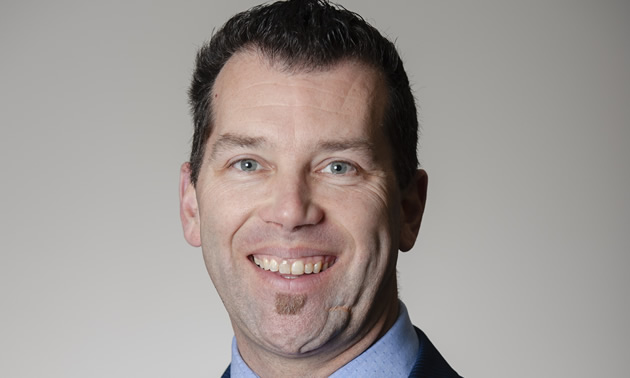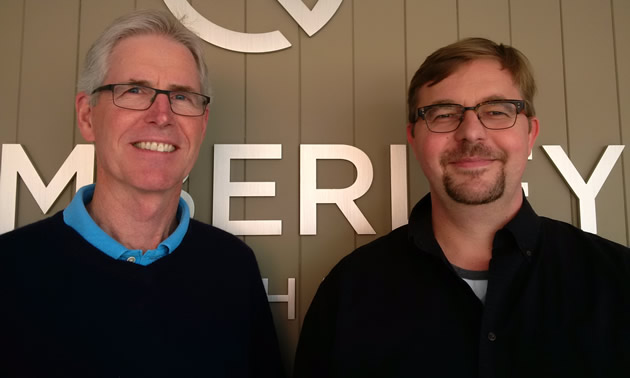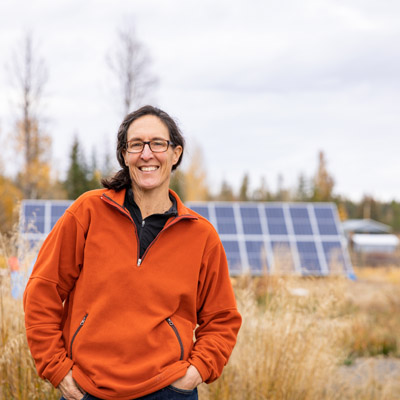Kimberley supports its own
A significant majority of businesses in Kimberley market goods and services within the Kootenay region and Kimberley itself

Schaun Goodeve has returned to Kimberley, B.C., as the city's manager of economic development. — Photo by Frida
Kimberley’s manager of economic development, Schaun Goodeve, approaches his work with a few clear and straightforward questions: What are the needs of the business community? What are the needs of the community at large? What would be a really good fit for this particular municipality in this context?
The first step toward solutions, he said, is listening.
“Research shows that overall we have an incredibly strong and engaged business community,” Goodeve said. “It’s very positive and shows a high satisfaction level for doing business in Kimberley. We need to capitalize on that.”
We asked Goodeve to describe his approach to economic development and tell us what’s on the horizon for Kimberley. Here is a recap of our conversation.
What is your approach to economic development?
I have learned that in this type of work, there’s no prescription that works for every community. You combine your best practices, your education, your experiences and information from the community, and dovetail all of that into your problem-solving.
The OCP (official community plan) is absolutely a guiding light when it comes to development. If we’re looking at new investment and development, it’s more than cheerleading—you must understand land use planning, infrastructure and the planning process. I’m a big believer in focusing on the needs of the existing local businesses before trying to attract new businesses.
Can you tell us about the business community’s exceptional engagement?
In 2018 we issued 76 new business licences in Kimberley, for a total of 533 home-based and storefront businesses. Many technology businesses are home-based, and we want to support them with information, networking opportunities and resources.
Businesses are seeing year-over-year growth. We recently learned from our business survey that for 83 per cent of the businesses in the community, their primary market is Kimberley or the Kootenay region. That speaks volumes about businesses being supported locally.
We know that tourism is an important part of our economy, but we can’t forget that we also need to meet the needs of the local community. We have exceptional amenities, and these benefit our residents and certainly attract tourists, whom I consider potential investors, whether they’re relocating or starting a new business.
What does support from your office look like?
Businesses should be focusing on their business, and we should be supporting them. For example, if one of the barriers to success is customer service training, it’s up to me to find programs that will help and bring those programs to the community.
I also firmly believe that businesses need to operate on facts. It’s important to aggregate facts for them—conducting the annual business survey, doing weekly business site visits, constantly communicating with the chamber, working on our business retention and expansion project—those are really important sources of facts that can help business owners and managers in their business decisions.
In 2019 I’ll be launching a business gap analysis. We want a clear understanding of the metrics that are involved with our business community. If someone walks into my office looking for advice, I can say, “Here are some facts and science that the City has gathered that can help you make your decision.”
What makes Kimberley attractive to potential investors?
As a community, we are prepared and investment-ready. At city hall, we’re ready in terms of a land-use perspective and minimal time frames for permit processing, with knowledgeable professional staff. This is an important part of our value proposition when assisting local business and attracting new investment.

Don McCormick (L), mayor of Kimberley, and Scott Sommerville, CAO for the City of Kimberley, lead the city's administrative team. — Photo courtesy Don McCormick
The true ambassadors for the business community are our businesses. The fact that our residents are supporting local businesses is another huge strength, and the satisfaction of the business community bears that out. We can certainly compete with other communities on price point alone.
Proximity to the airport is a huge advantage, and the fact that we’re a known tourism destination speaks to our opportunities to convert visitors into investors.
We have a strong investment incentive policy that gives tax relief, and we’re developing our business gap analysis and our new resort development strategy. We are focused on supporting local businesses, helping them to withstand any external shocks that might come along. We have some exciting investment leads, and the future looks bright for Kimberley.






Comments